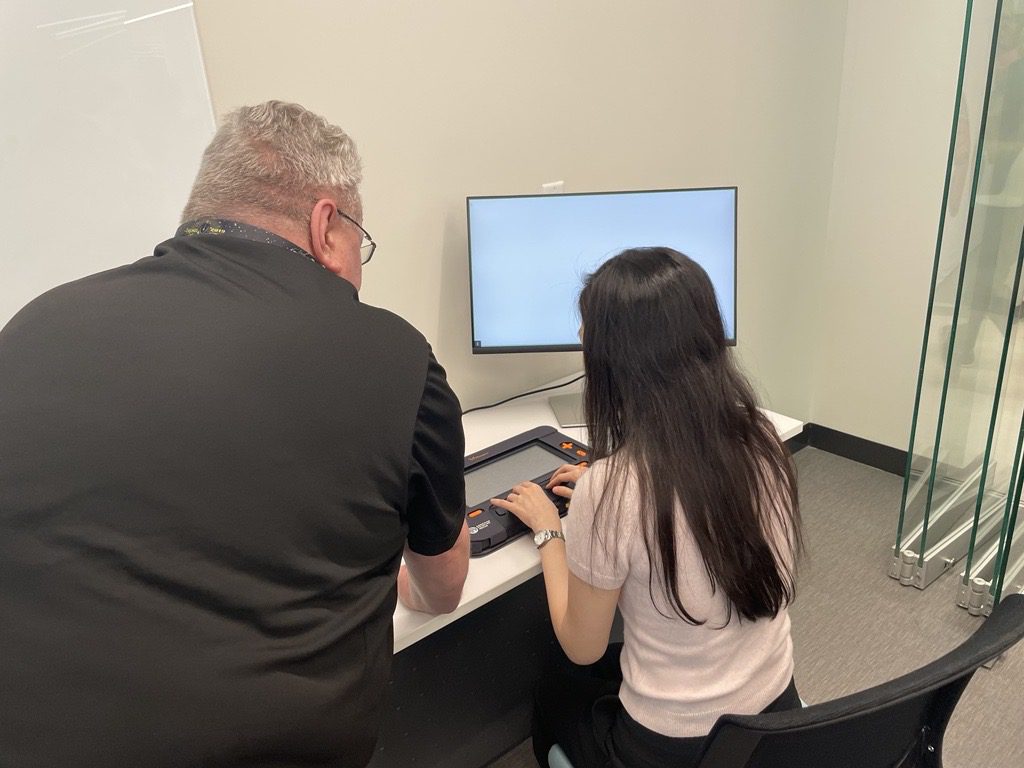Accessibility at the NCSA Conference and Beyond with Monarch

The National Conference on Student Assessment (NSCA) is a national gathering of educators, assessment practitioners, and innovators within the world of education to learn about new and current trends in educational assessment. Attendees spend time discussing new technologies, best practices, and the importance of fair assessment. This June, a team from American Printing House (APH) is making sure accessibility has a seat at the table.
During the NSCA conference, school administrators meet with assessment publishers to decide who will provide the different types of exams their students will receive throughout the year. These publishing companies put on presentations to discuss trends in the market, standard changes, student needs, and more. While there have been one or two presentations on student accessibility in the past, it is not a part of every conversation.
Along with that, organizations like APH, who are equipped to provide publishers with the tools they need to ensure they truly understand what it means to create accessible content, have not been a part of the conversation. When instructions on accessibility are done without these partnerships, the information, while well intended, can be misguided and not reflective of the real needs of the students they are trying to serve.
“We want to have a voice and a presence at these conferences,” said Lauralyn Randles, APH’s Director of Product Advancement, and one of four APH staff members attending the NCSA conference in June. “We will be around to make sure that accessibility is a part of the conversation within these sessions, but also to talk with some of the publishers and show them how we can provide accessibility within compliance of WCAG 2.1.” WCAG 2.1 is the current standard set for ensuring accessibility of digital content.
Inside the classroom, digital delivery for assignments is becoming more popular. Learning systems like Blackboard, Canvas, and Google Classroom are being used as integral pieces of education. Along with daily assignments, digital textbooks and exams are also becoming more prevalent for students, and accessibility is not always at the top of the priority list. “We don’t want our kids to get left behind. We want to be proactive and make sure these companies have a partner that values accessibility and can help them work toward creating accessible options,” said Randles.
Up until this point, the accessibility of digital tests has been largely done by screen readers, refreshable braille displays, or shifting to a paper copy. However, using these kinds of technology can lead to inconsistencies in testing for students who are blind or low vision, especially when it comes to science or math. If a student is required to answer a question that features a figure or graph, without the proper consideration for their needs, they may have to skip the question entirely or rely on crafting skills, also considering the time it takes for their TVI to recreate the figure. “With these options you really can’t judge whether or not the student understands the concept. At that point, it’s whether they can understand my art skills,” said Randles.
“With the Monarch, we can import those images and have them visible in a matter of seconds.” Monarch allows students to receive the same level of instruction, and detail, in these online exams or assignments. Students can have access to the graphs and images without the delay of a TVI needing to create it from thin air. This lets students work independently and simultaneously alongside their sighted peers, while they have the same opportunity to prove their knowledge of the concepts before them. “It is just a night and day experience for them, and Monarch has opened that realm of possibility,” said Randles.
Share this article.
Related articles

Simplifying Standardized Tests with the Monarch
Standardized tests can be a source of anxiety for students who are blind or have low vision. Although they are...
